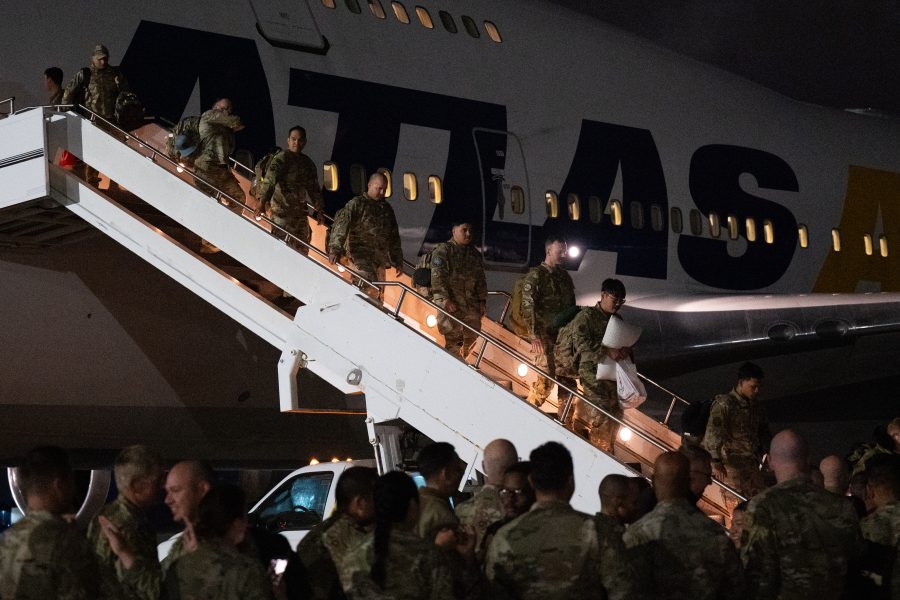As part of an overhaul of its force deployment, the Air Force announced six initial locations on May 15 that will test a new model.
Command teams leading new “Air Task Forces” will begin to come together this summer, complementing existing forces there, at the following bases:
- Davis-Monthan Air Force Base, Ariz.
- Scott Air Force Base, Ill.
- Joint Base San Antonio, Texas
- Dyess Air Force Base, Texas
- Fairchild Air Force Base, Wash.
- Seymour-Johnson Air Force Base, N.C.
A senior Air Force official told reporters that the locations were picked for their ability to host the new forces without any additional military construction, to minimize cost, for their existing personnel, and for their proximity to training areas.
“These preferred locations meet the criteria for both space, certain skill sets, and distance to training ranges,” the senior official said. “The ATF locations will have a certain amount of sustainment forces, either there or close by, and the mission forces may come from somewhere else, or they may be co-located.”
An Air Task Force will consist of a command element with an attached expeditionary air staff and special staff that work directly for the commander and a Combat Air Base Squadron that does base support. Mission Generation Force Elements come in to project airpower, for example. Mission Sustainment Teams support those forces.
The six locations comprise two different rotations—two for the Middle East and one for the Pacific. The first three task forces will deploy in October 2025. The other three task forces will rotate in to replace the first batch of forces in April 2026.
The command element is roughly 50 Airmen at each location, whose units perform a wide variety of Air Force missions. The Air Task Forces will led by colonels, personally picked by Air Force Chief of Staff Gen. David W. Allvin, an Air Force spokesperson said.
Air Task Forces will range in size from hundreds to thousands of Airmen. The design of Air Task Forces is “modular,” Air Force officials say, so the size will depend on how large its mission generation element is—for example, an ATF could have one fighter squadron or several.
“What we want is the command layer and the sustainment layer to be capable of accepting forces really of any type,” the senior official said.
Air Force officials say ATFs are “experimental” and “a pilot program” for the future.
Air Task Forces will lay the groundwork for Combat Wings—in which units could deploy overseas from a single base—seen as the Air Force’s future deployment model. The overhaul is designed to present forces to the Department of Defense’s 11 combatant commands in a more cohesive and easier-to-understand way instead of pulling together Airmen into piecemeal units to meet the requirements of U.S. military operations. Underpinning the changes is the Air Force’s new AFFORGEN deployment model of six-month cycles during which Airmen prepare, train, deploy, and reset.
The change is based on a need to deploy forces that can operate well together more quickly, driven by the threat posed by China. It informed Air Force’s efforts to “re-optimize” for so-called Great Power Competition, though the planning for Air Task Forces predates the re-optimization efforts.
“This is kind of walking us back towards this model that we had during the Cold War, where we know each other, we trained together, we’re building the team in peacetime and in preparation for deployment,” the senior official said. “These teams are able to train together for much longer.”
However, Air Task Forces are just part of that evolution. The Air Force has already deployed Expeditionary Air Bases of units drawn from fewer units. The first XABs were deployed to CENTCOM in October, followed by a rotation six months later in April.
But while there were positives, Expeditionary Air Bases “isn’t exactly where we want to be either,” the senior official said. The Air Force still had to draw from around 60 units for those deployments.
Air Task Forces take the consolidation a step further.
“The ATF, the Air Task Force, is really three layers that will be constant, and that we’re trying to get from as few places as possible,” the official said. “This is one of those steps in the evolution.”
